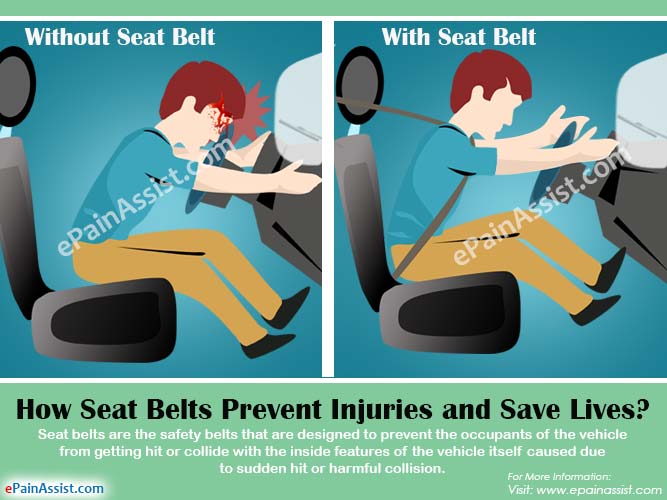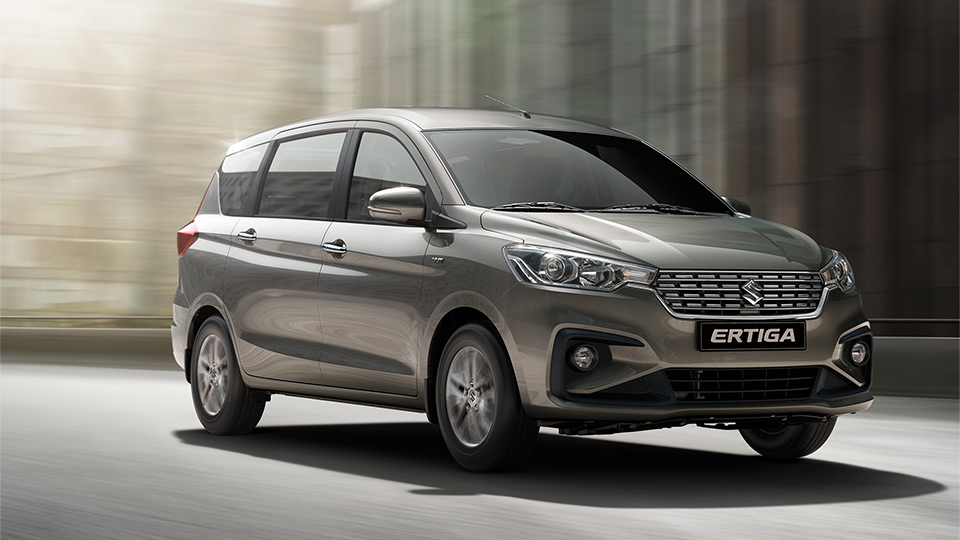HOW SEAT BELT WORKS?
The basic
idea of a seatbelt is very simple: It keeps you from flying through the
windshield or hurdling toward the dashboard when your car comes to an abrupt
stop. But why would this happen in the first place? In short, because of
inertia.
If a car is
speeding along at 50 miles per hour, inertia wants to keep it going 50 mph in
one direction. Air resistance and friction with the road are constantly slowing
it down, but the engine's power compensates for this energy loss.
Anything
that is in the car, including the driver and passengers, has its own inertia,
which is separate from the car's inertia. The car accelerates riders to its
speed. Imagine that you're coasting at a steady 50 miles per hour. Your speed
and the car's speed are pretty much equal, so you feel like you and the car are
moving as a single unit.
But if the
car were to crash into a telephone pole, it would be obvious that your inertia
and the car's were absolutely independent. The force of the pole would bring
the car to an abrupt stop, but your speed would remain the same. Without a
seatbelt, you would either slam into the steering wheel at 50 miles per hour or
go flying through the windshield at 50 miles per hour. Just as the pole slowed
the car down, the dashboard, windshield or the road would slow you down by
exerting a tremendous amount of force.
It is a
given that no matter what happens in a crash, something would have to exert
force on you to slow you down. But depending on where and how the force is
applied, you might be killed instantly or you might walk away from the damage
unscathed.
If you hit
the windshield with your head, the stopping power is concentrated on one of the
most vulnerable parts of your body. It also stops you very quickly, since the
glass is a hard surface. This can easily kill or severely injure a person.
A seatbelt
applies the stopping force to more durable parts of the body over a longer
period of time. In the next section, we'll see how this reduces the chances of
major injury.
A typical
seatbelt consists of a lap belt, which rests over your pelvis, and a shoulder
belt, which extends across your chest. The two belt sections are tightly
secured to the frame of the car in order to hold passengers in their seats.
When the
belt is worn correctly, it will apply most of the stopping force to the rib
cage and the pelvis, which are relatively sturdy parts of the body. Since the
belts extend across a wide section of your body, the force isn't concentrated
in a small area, so it can't do as much damage. Additionally, the seatbelt
webbing is made of more flexible material than the dashboard or windshield. It
stretches a little bit, which means the stop isn't quite so abrupt. The
seatbelt shouldn't give more than a little, however, or you might bang into the
steering wheel or side window. Safe seat belts will only let you shift
forward slightly.

A car's
crumple zones do the real work of softening the blow. Crumple zones are areas
in the front and rear of a car that collapse relatively easily. Instead of the
entire car coming to an abrupt stop when it hits an obstacle, it absorbs some
of the impact force by flattening, like an empty soda can. The car's cabin is
much sturdier, so it does not crumple around the passengers. It continues
moving briefly, crushing the front of the car against the obstacle. Of course,
crumple zones will only protect you if you move with the cab of the car -- that
is, ifyou are secured to the seat by your seat belt.
In a
typical seat belt system, the belt webbing is connected to a retractor
mechanism. The central element in the re tractor is a spool, which is attached
to one end of the webbing. Inside the re tractor, a spring applies a rotation
force, or torque, to the spool. This works to rotate the spool so it winds up
any loose webbing.

When you
pull the webbing out, the spool rotates counter-clockwise, which turns the
attached spring in the same direction. Effectively, the rotating spool works to
untwist the spring. The spring wants to return to its original shape, so it
resists this twisting motion. If you release the webbing, the spring will
tighten up, rotating the spool clockwise until there is no more slack in the
belt.
The
retractor has a locking mechanism that stops the spool from rotating when the
car is involved in a collision. There are two sorts of locking systems in
common use today:
systems
triggered by the car's movement
systems
triggered by the belt's movement
The first
sort of system locks the spool when the car rapidly decelerates (when it hits
something, for example). The diagram below shows the simplest version of this
design.
The central
operating element in this mechanism is a weighted pendulum. When the car comes
to a sudden stop, the inertia causes the pendulum to swing forward. The pawl on
the other end of the pendulum catches hold of a toothed ratchet gear attached
to the spool. With the pawl gripping one of its teeth, the gearcan't rotate
counter-clockwise, and neither can the connected spool. When the webbing
loosens again after the crash, the gear rotates clockwise and the pawl
disengages.
The second
kind of system locks the spool when something jerks the belt webbing. The
activating force in most designs is the speed of the spool rotation. The
diagram shows a common configuration.
The central
operating element in this design is a centrifugal clutch -- a weighted pivoting
lever mounted to the rotating spool. When the spool spins slowly, the lever
doesn't pivot at all. A spring keeps it in position. But when something yanks
the webbing, spinning the spool more quickly, centrifugal force drives the
weighted end of the lever outward.
The
extended lever pushes a cam piece mounted to the re-tractor housing. The cam is
connected to a pivoting pawl by a sliding pin. As the cam shifts to the left,
the pin moves along a groove in the pawl. This pulls the pawl into the spinning
ratchet gear attached to the spool. The pawl locks into the gear's teeth,
preventing counter-clockwise rotation.

No comments:
Post a Comment